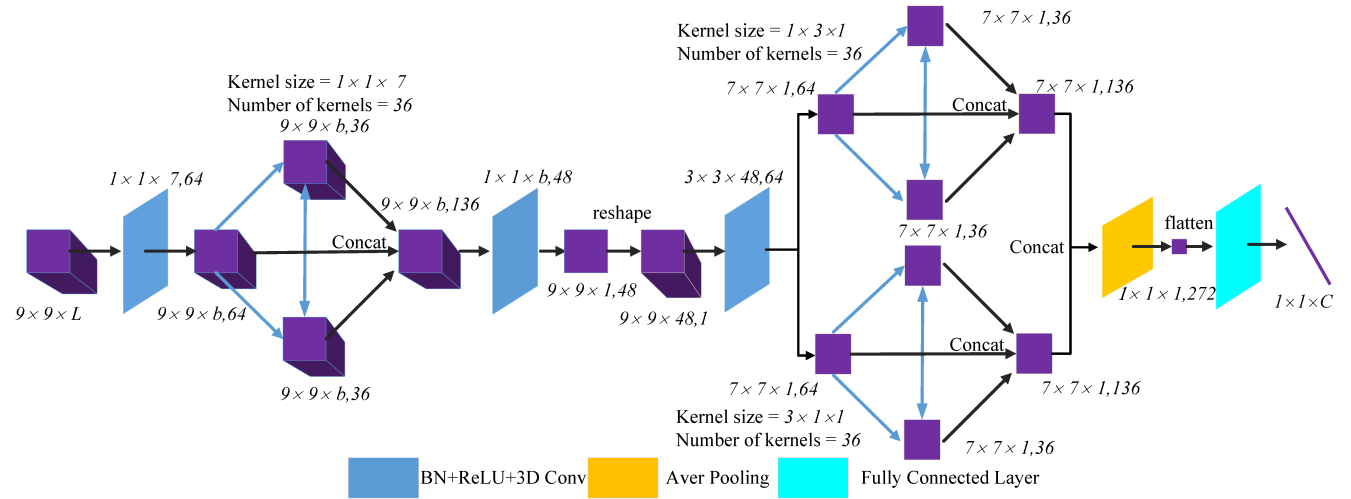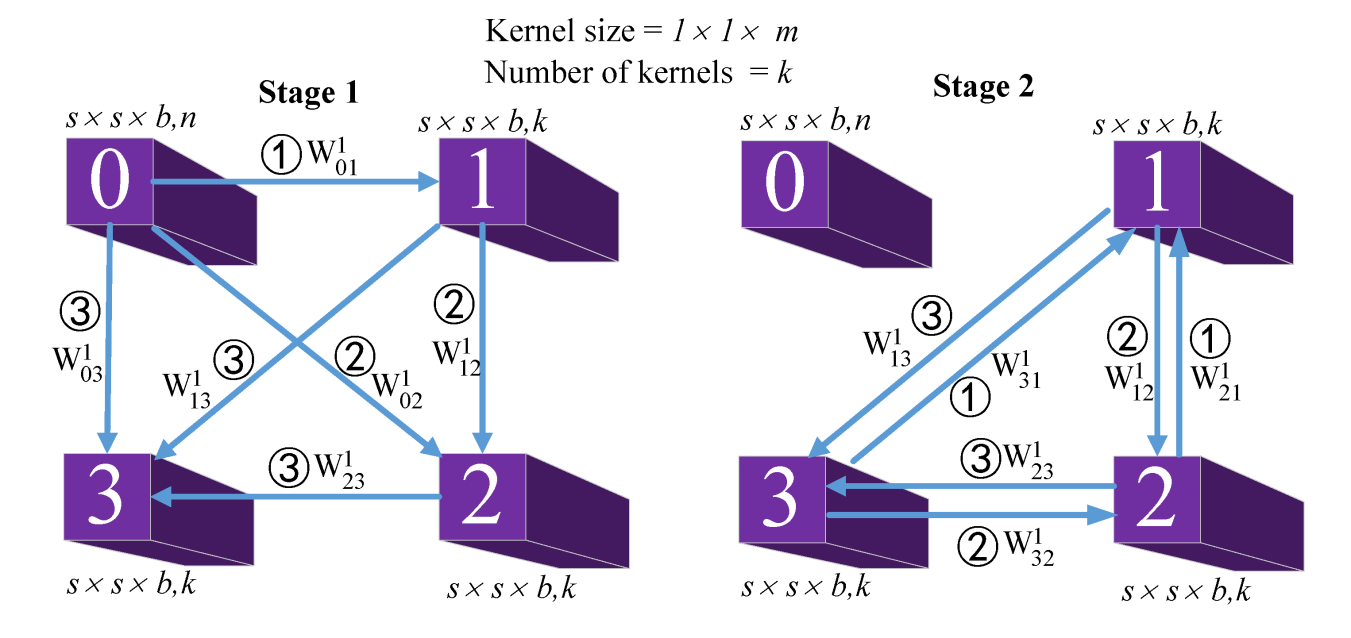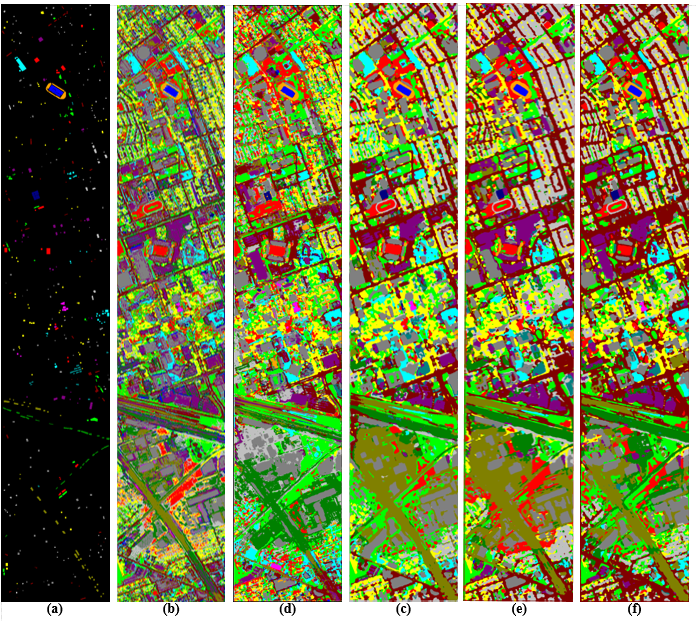Alternately Updated Spectral–Spatial Convolution Network for the Classification of Hyperspectral Images
Wenju Wang Shuguang Dou * Sen Wang
Abstract
The connection structure in the convolutional layers of most deep learning-based algorithms used for the classification of hyperspectral images (HSIs) has typically been in the forward direction. In this study, an end-to-end alternately updated spectral–spatial convolutional network (AUSSC) with a recurrent feedback structure is used to learn refined spectral and spatial features for HSI classification. The proposed AUSSC includes alternating updated blocks in which each layer serves as both an input and an output for the other layers. The AUSSC can refine spectral and spatial features many times under fixed parameters. A center loss function is introduced as an auxiliary objective function to improve the discrimination of features acquired by the model. Additionally, the AUSSC utilizes smaller convolutional kernels than other convolutional neural network (CNN)-based methods to reduce the number of parameters and alleviate overfitting. The proposed method was implemented on four HSI data sets: Indian Pines, Kennedy Space Center, Salinas Scene, and Houston. Experimental results demonstrated that the proposed AUSSC outperformed the HSI classification accuracy obtained by state-of-the-art deep learning-based methods with a small number of training samples.

Figure 1. An overview of the proposed end-to-end alternately updated spectral–spatial convolutional network (AUSSC).
Overview
An alternately updated spectral–spatial convolutional network is proposed for HSI classification. Fig. 1 shows an overview of the proposed method. For HSI data with L channels and a size of H×W, a spatial size of s×s was selected from the raw HSI data and used as the input to the AUSSC network. First, the AUSSC uses three smaller convolutional kernels to learn spectral and spatial features from an original HSI patch. Second, the alternately updated spectral and spatial blocks refine the deep spectral and spatial features using recurrent feedback. Finally, the model parameters are optimized using the cross-entropy loss and center-loss loss functions.

In this study, refined spectral and spatial features in HSIs were used as core concepts to design an end-to-end CNN-based framework for HSI classification. This alternately updated convolutional spectral–spatial network utilizes alternately updated spectral and spatial blocks and primarily includes small convolutional kernels in three different dimensions to learn HIS features, combining them into advanced features.
The learning of deep refined spectral and spatial features by alternately updated blocks makes our method superior to other deep learning-based methods, as this allows it to achieve a high classification accuracy. Furthermore, experimental results also demonstrated that the center loss function can slightly improve the classification accuracy of hyperspectral images. Results showed that when 200 training samples were used from different HSI data sets, the AUSSC achieved the highest classification accuracy among the deep learning-based methods for all three data sets. Additionally, using different training samples, the AUSSC was also found to be the best method in terms of OA for all HSI data sets. However, the AUSSC has a longer training time than other conventional algorithms.

Figure. 3 Classification maps for Houston dataset.
Paper
- Paper: PDF
Please consider citing if this work and/or the corresponding code are useful for you:
@article{shuguang:aussc:2019,
title = {Alternately Updated Spectral–Spatial Convolution Network for the Classification of Hyperspectral Images},
author = {Wang, Wenju; Dou, Shuguang; Sen Wang.},
journal = {Remote Sensing},
volume={11}
year = {2019}
article number={1794}
}
Code
We use tensorflow to implement alternatively updated spectral-spatial network framework. Code is available online in ths github repository: https://github.com/shuguang-52/AUSSC.